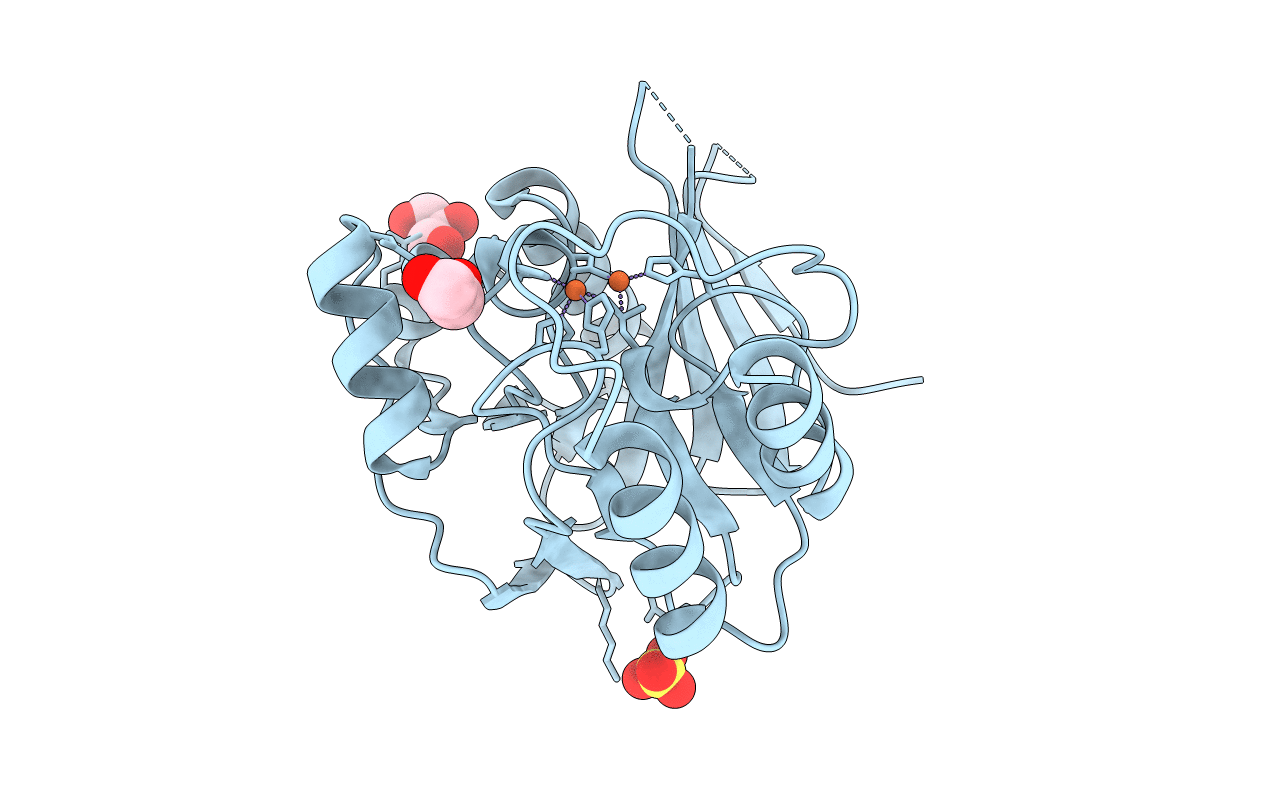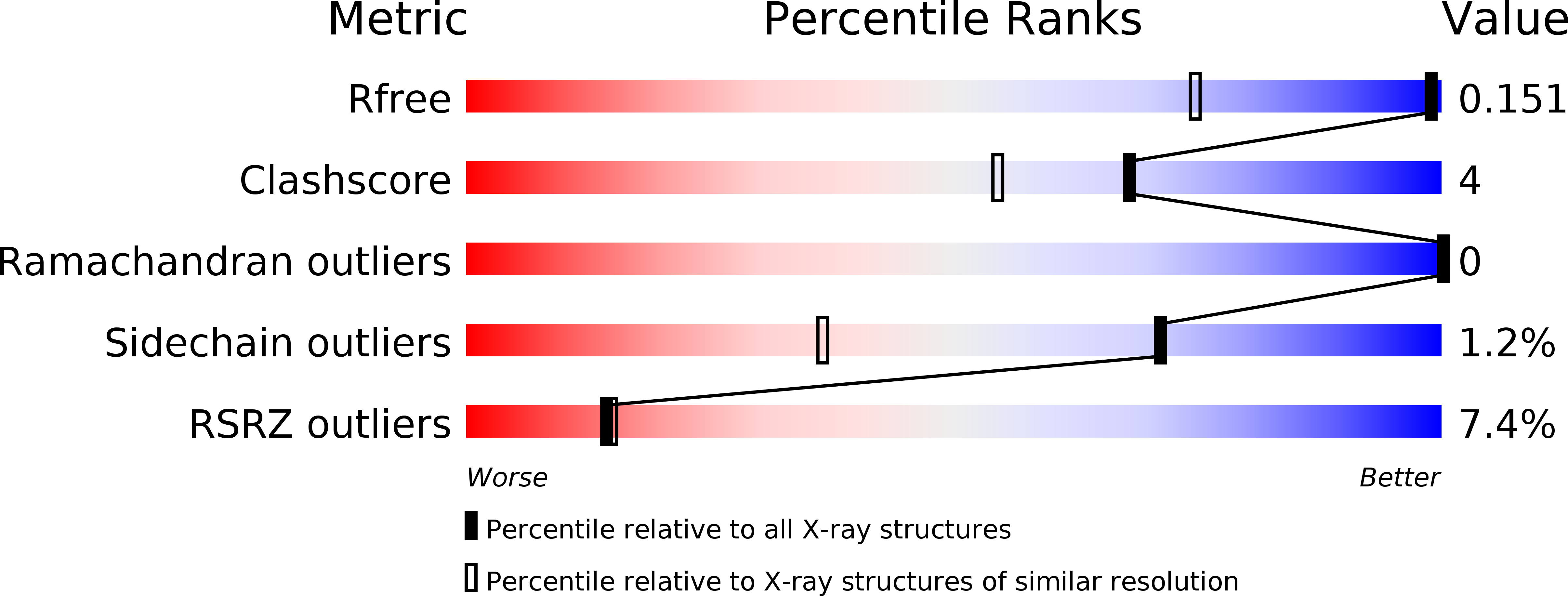
Deposition Date
2015-12-08
Release Date
2016-08-10
Last Version Date
2024-11-06
Entry Detail
PDB ID:
5FQA
Keywords:
Title:
Crystal Structure of Bacillus cereus Metallo-Beta-Lactamase II
Biological Source:
Source Organism:
BACILLUS CEREUS (Taxon ID: 1396)
Host Organism:
Method Details:
Experimental Method:
Resolution:
1.10 Å
R-Value Free:
0.14
R-Value Work:
0.11
R-Value Observed:
0.11
Space Group:
C 1 2 1


